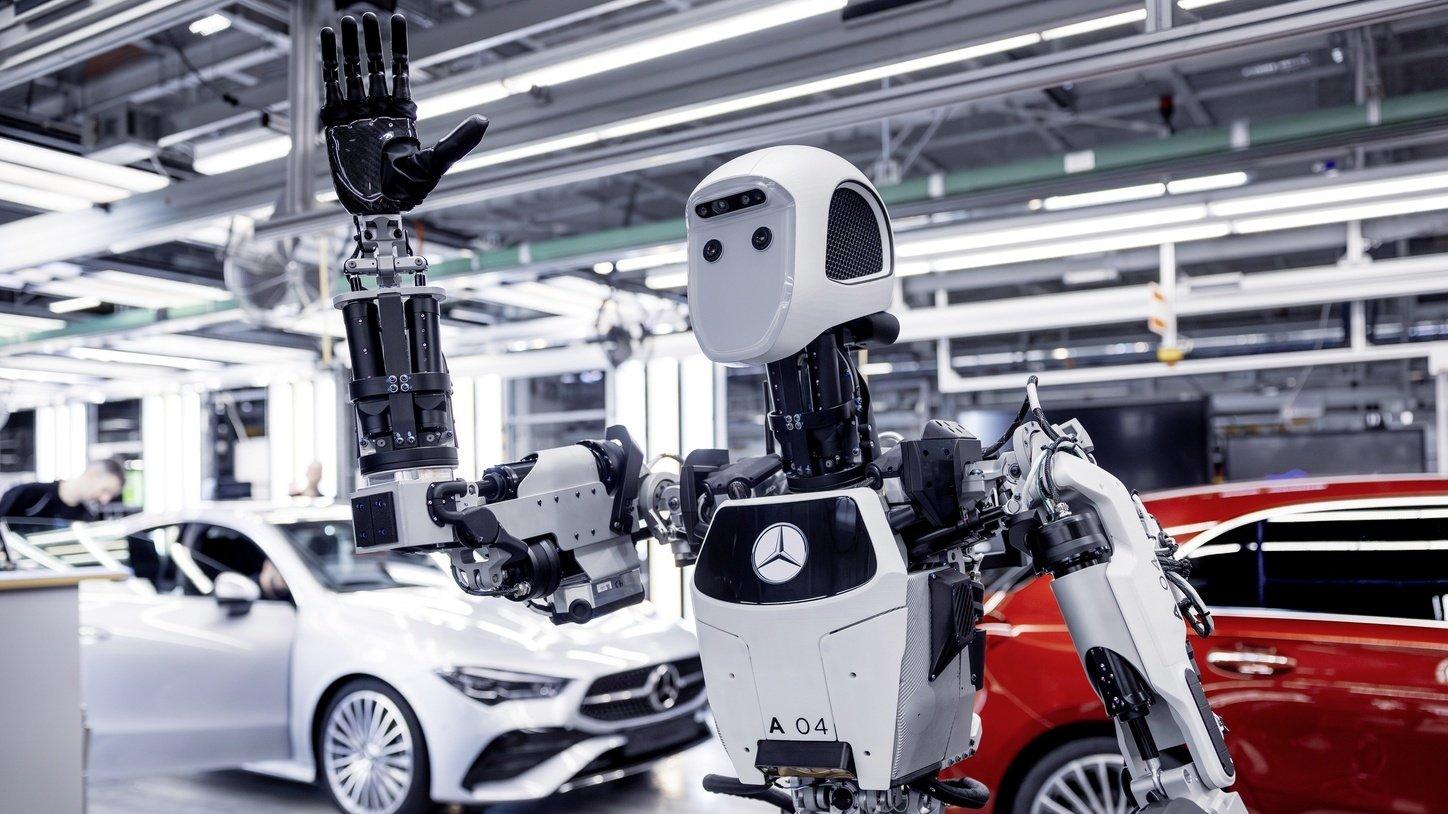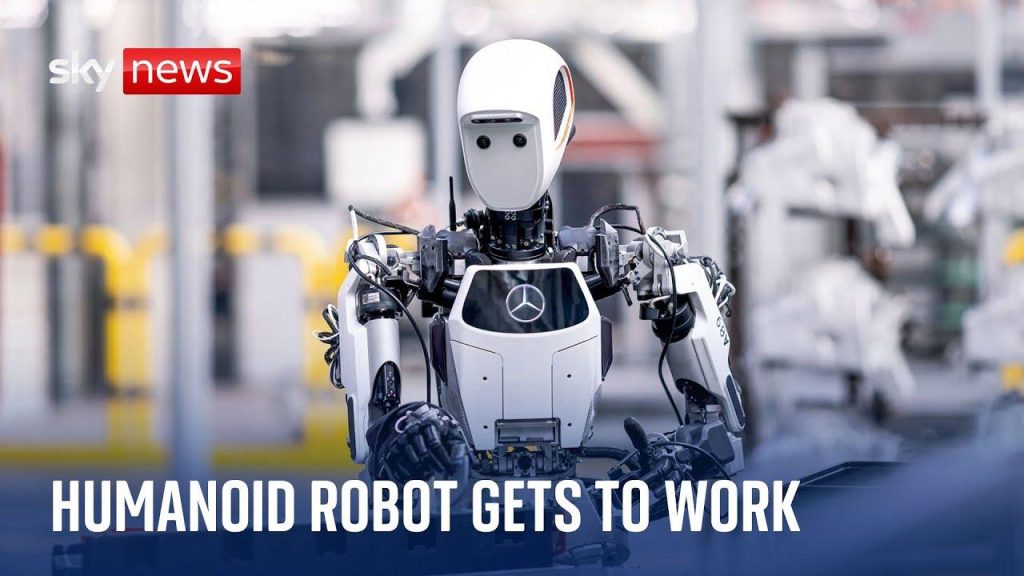In a groundbreaking development for the manufacturing industry, a humanoid robot named Apollo has made its debut at the prestigious Mercedes-Benz plant in Berlin, marking a meaningful milestone in the integration of robotics into everyday operations. Designed by the Texas-based firm Antronic, Apollo is setting a new standard as the first humanoid robot to autonomously carry out real workplace tasks, specifically assembling engine parts without any human intervention. While larger, more established industrial robots have dominated manufacturing floors for years, Apollo’s versatility and human-like capabilities could revolutionize how tasks are performed, particularly in logistics and quality inspection. The unveiling of this innovative technology raises critically important questions about the future of labor in an aging society, offering the potential to address labor shortages in roles deemed too dull, dirty, or risky for human workers. As the world watches this pioneering demonstration, the cautious optimism surrounding Apollo hints at a future where humanoid robots become a regular presence in our daily lives.
The Rise of Humanoid Robots: A Technological Milestone in Manufacturing
As humanoid robots like Apollo gain traction in manufacturing environments, organizations must navigate the complexities of integrating this technology into their existing workflows.The operational versatility of these robots offers several advantages, including:
- Enhanced Precision: Humanoid robots can perform tasks with a high degree of accuracy, reducing the risk of errors and improving product quality.
- Increased Productivity: By taking over repetitive and labor-intensive tasks, these robots allow human workers to focus on more strategic roles, leading to greater overall efficiency.
- Adaptability: Humanoids can be programmed for a variety of tasks and can easily be reconfigured to meet changing production demands, making them more flexible than traditional industrial robots.
Moreover, the introduction of humanoid robots raises significant questions regarding workforce dynamics and the skills required in modern manufacturing. As companies like Mercedes pioneer this shift, they may need to invest in retraining their existing employees to work alongside these robots, fostering a collaborative surroundings. With a growing reliance on artificial intelligence, workers may find themselves engaging in new roles focused on:
- Supervision: Monitoring robotic performance and ensuring safety protocols are adhered to.
- Maintenance: Performing routine checks and repairs to keep robotics functioning optimally.
- Innovation: Focusing on the development of new technologies and processes that can further enhance manufacturing capabilities.
Apollo: The First Autonomous Humanoid Robot in a Real-World Production Environment
The deployment of Apollo marks a pivotal shift in the role of robotics within production lines, as it is indeed engineered to seamlessly interact with both workers and machinery. By utilizing advanced sensors and artificial intelligence, Apollo can navigate complex environments, recognize parts, and execute intricate tasks with dexterity akin to that of a human. This capability allows it to autonomously undertake a multitude of functions, making it an integral part of the workforce. The implications of such technology extend beyond mere efficiency improvements; they could redefine labor categorizations and task allocations across industries. This change could lead to an enhanced focus on high-value tasks, where human intuition and creativity remain irreplaceable.
Despite the exciting advancements, the introduction of autonomous humanoids like Apollo brings forth a host of challenges and considerations for workforce adaptation. Companies will need to contend with the reality of potential job displacement and the associated emotional responses from workers concerned about AI technologies. A successful integration strategy might involve collaboration between human workers and robotic counterparts, enhancing human roles rather than replacing them. Training programs focusing on technology enhancement, problem-solving, and interpersonal skills could foster greater adaptability, allowing human workers to thrive alongside their new automated colleagues. The transition to this technologically sophisticated era will necessitate dialog regarding ethical employment practices and the reimagining of workplaces to cultivate a hybrid ecosystem of human-robot collaboration.
Flexibility and Adaptability: The Competitive Advantage of Humanoid Robots in Industry
The introduction of humanoid robots offers unparalleled flexibility in adapting to the diverse and evolving needs of industrial production. Unlike traditional machinery, which can be limited to specific tasks, these robots are designed to seamlessly switch between different functions based on current requirements. This adaptability allows them to efficiently support various processes, whether it’s assembling intricate components or handling quality control inspections. The potential to reprogram these robots on-the-fly signifies a leap toward a more dynamic work environment, facilitating rapid responses to market demands and operational changes. Key benefits include:
- Task Versatility: Humanoid robots can engage in a range of activities, from manual assembly to data collection, without the need for extensive downtime.
- Real-time Learning: Utilizing machine learning algorithms, these robots can analyse errors and improve performance based on live data.
- Space Efficiency: Their humanoid form allows them to navigate tight workspaces and work alongside human employees without major layout overhauls.
Furthermore, the successful implementation of humanoid robots highlights the necessity for continuous innovation in workforce strategy. As organizations adapt to these advanced technologies, the skillsets required from workers will also transform, emphasizing a blend of technical acumen and collaborative abilities. Upskilling programs tailored to familiarize employees with robotic functionalities will become increasingly vital. Workers may find themselves specializing in areas such as:
- Interdisciplinary Collaboration: Coordinating with robotic systems to enhance workflow efficiency and productivity.
- Human-Robot Interaction Design: Creating user-amiable interfaces to facilitate smoother cooperation between humans and robots.
- Data Analysis: Leveraging analytics derived from robotic operations to initiate proactive decision-making processes.
Addressing Labor Shortages: The Future Role of Robots in an Aging Workforce
The emergence of humanoid robots in workplaces signals a proactive approach to addressing labor shortages, particularly within aging populations where there is a declining number of able workers. Businesses are beginning to realize that integrating these automated workers can help maintain operational efficiency in roles often neglected due to their repetitive or strenuous nature. Humanoid robots can be designed to take over responsibilities in industries grappling with recruitment issues, such as healthcare and manufacturing, thereby allowing human employees to transition into more complex or fulfilling positions. As these robots continue to evolve, we can expect to see enhanced customizations tailored to specific workplace requirements, paving the way for increased deployment in various sectors.
Furthermore, companies will need to foster a culture that emphasizes collaboration between human and robotic workers. This transition will not only involve redefining roles but also reshaping training approaches that focus on developing diverse skill sets necessary for effective teamwork with machines. A focus on multidisciplinary education will cultivate a workforce adept in areas such as robotic oversight,programming,and data interpretation. By preparing employees to work in tandem with technology, organizations can ensure a smooth integration that minimizes disruptions while maximizing productivity. This strategic alignment will be key in creating resilient workplaces capable of adapting to the demands of the future labor market.























